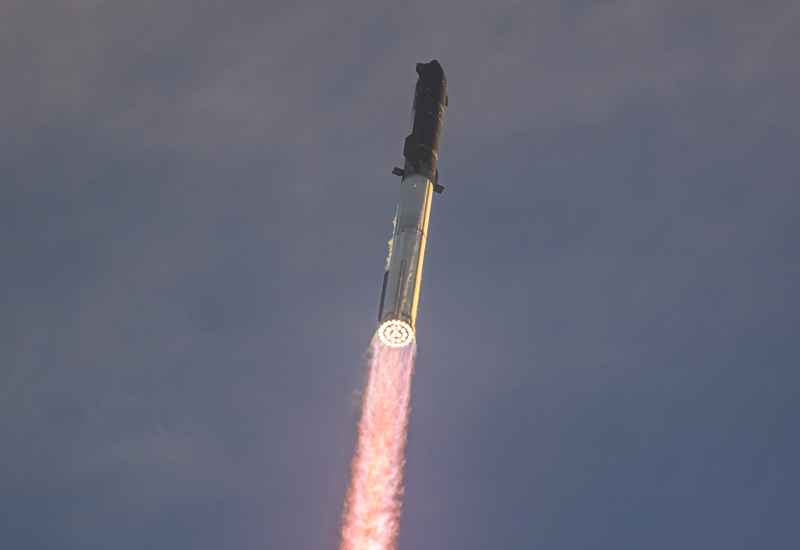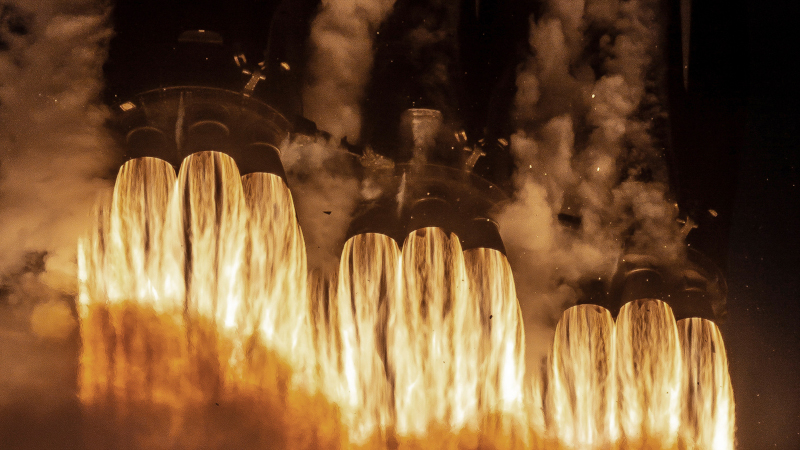SpaceX announced that it was forced to delay the launch of the Starship rocket until at least the end of November due to the protracted process of obtaining a license from the US Federal Aviation Administration (FAA). Despite the readiness of the first stage of Super Heavy and the Starship spacecraft to fly since the beginning of August, the regulator, according to SpaceX, is delaying the process for frivolous and frankly absurd reasons. The delay could delay NASA’s plans to return Americans to the Moon as part of the Artemis program.

Image source: Spacex
During the next launch, SpaceX plans to return Super Heavy to the launch pad. The booster, which is longer and wider than a Boeing 747, must make a vertical descent using the power of its Raptor engines, slow to a near hover, and then two mechanical grippers must “catch” the steel giant in the air above the launch pad. Like the first stage of the Falcon 9 rocket, the Super Heavy stage is designed to be reusable, but the company intends to land them directly on the launch pad rather than on an offshore landing platform hundreds of miles away.
«It is clear that such a unique operation will require additional time for analysis from a licensing point of view,” SpaceX admits. However, the company claims that instead of focusing resources on critical safety analysis, the licensing process has been repeatedly derailed by frivolous and frankly absurd problems. This is not the first time SpaceX has cited regulatory hurdles. Last year, the company actively called on the FAA to double the staff involved in reviewing applications for commercial space launches.

According to the company, licensing delays are caused by a complex of problems: bureaucratic slowness, lack of transparency, poor methodologies, as well as ineffectiveness and duplication of regulations. As an example, SpaceX cited delays in reviewing the application for the fifth test launch of the Starship. “This delay is not due to new safety issues, but due to redundant environmental analysis,” the company said, emphasizing that the four open environmental issues clearly illustrate the challenges space companies face in the current regulatory environment.
Among the environmental issues that have particularly raised eyebrows for SpaceX is the issue of water being released into the environment around the Starship launch site in Texas. The launch pad uses water to cool a steel flame deflector located under the Super Heavy’s 33 main booster engines. The company categorically states that fines levied against it this year by the Texas Commission on Environmental Quality (TCEQ) and the Environmental Protection Agency (EPA) were “entirely related to disputes over paperwork” and not to any actual release of pollutants into the environment.
Another aspect causing the delay is a change in the Super Heavy’s flight path on an upcoming mission. This technical solution means that the steel ring that separates from the top of the booster will fall elsewhere in the Gulf of Mexico, not far from the launch and landing site of the rocket. SpaceX says this minor change prompted the FAA to initiate a 60-day consultation with the National Marine Fisheries Service (NMFS) to reassess the impact of the ring fall on marine life.
Another issue that requires further consideration is that the Super Heavy’s new return path to land in Texas, rather than to the Gulf of Mexico as it did in June, will expose a large area to a sonic boom. This development prompted the FAA to approve another 60-day consultation, this time with the US Fish and Wildlife Service (USFWS), to study the impact of the sonic boom on terrestrial fauna. In addition, the FAA requires launch companies to maintain insurance coverage to protect against third party damage claims.

SpaceX, for its part, states that it fully understands this responsibility and is willing to make compromises when it comes to ensuring public safety. However, the company has expressed serious concerns that delays in Starship test flights caused by protracted inspections could harm US national interests in space. China has set a goal of landing its astronauts on the moon by 2030, and NASA Administrator Bill Nelson is pushing for American astronauts to return there first.
Recall that NASA selected the Starship vehicle as a manned lander to transport the first two crews of the Artemis program between lunar orbit and the south pole of the Moon. Starship’s early test flights are critical to proving the rocket’s reliability and testing more complex technologies, such as in-space refueling, needed to support the lunar landings of the U.S. space mission.